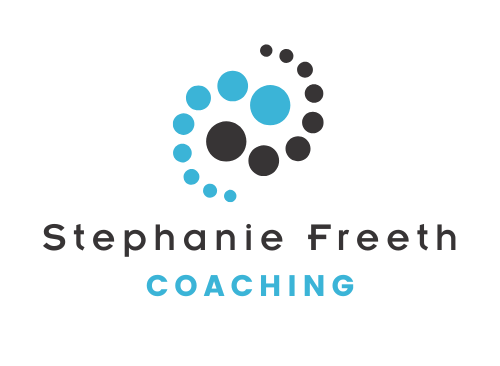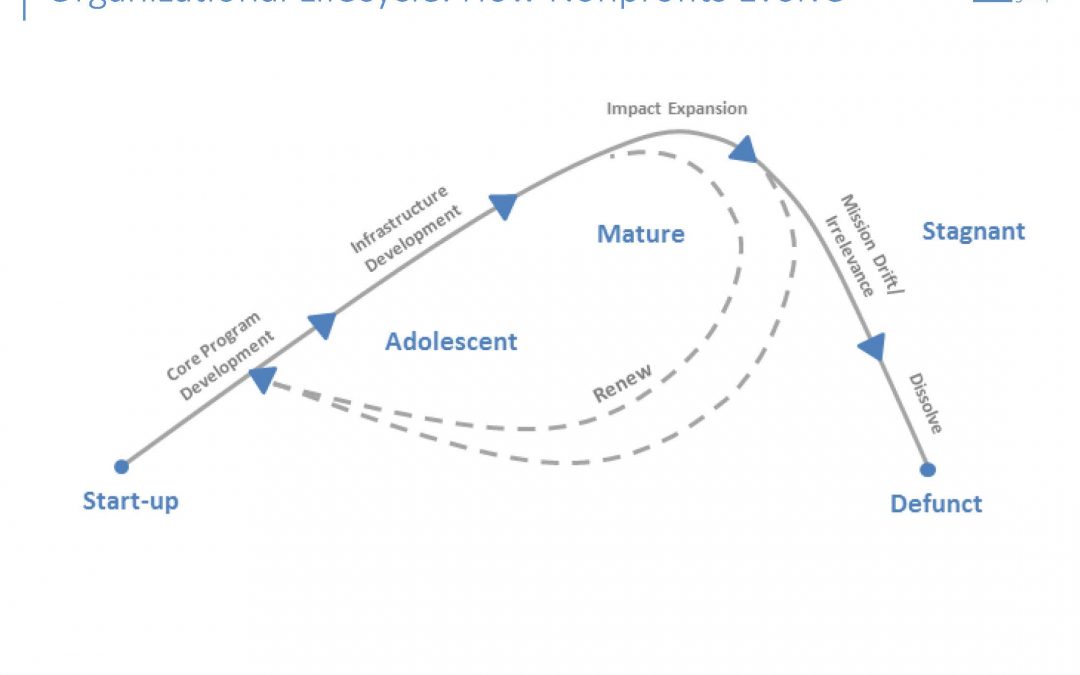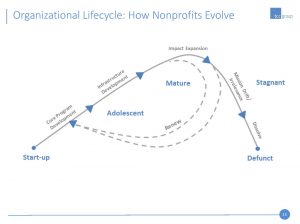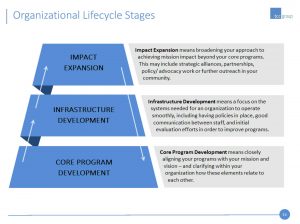To make strategic planning more efficient, effective and enjoyable for nonprofits, I’m now using TCC Group‘s Core Capacity Assessment Tool (CCAT) with all of my strategic planning clients. In fact, I am now a certified facilitator for the CCAT after having completed TCC Group’s certification and training program this summer. Special thanks to Anne Glendon and Yodit Mesfin-Johnson for bringing this terrific nonprofit assessment tool to my attention, BTW.
What I love about this tool is that it incorporates a nonprofit organization’s lifecycle stage as a key factor in determining what kinds of additional and specific capacity the organization needs to build next. The CCAT was built in the context of capacity building which is when a foundation invests in a nonprofit organization’s systems, processes and people beyond providing direct funding to programs. I am choosing to use the CCAT in the context of strategic planning because its design and outputs can significantly speed up a strategic planning process by getting some of the most important factors on the table from the outset. I also love that there is comparative data available for benchmarking an organization’s results with other nonprofits in a similar field.
WHAT IS THE CCAT?
As described by TCC Group, the CCAT is a leading tool for measuring a nonprofit’s organizational effectiveness in relation to four core capacities – leadership, adaptability, management, and technical – as well as organizational culture. The Core Capacity Assessment Tool (CCAT) is an online, survey-based tool designed to collect information from key decision-makers in an organization and create prioritized recommendations for building organizational capacity. Used by nonprofits more than 5,000 times, the CCAT is a leading assessment tool for measuring a nonprofit’s effectiveness.
The CCAT comprises 146 questions and takes 30-45 minutes to complete. The survey is completed by all key senior leaders (including several board members) of an organization. The assessment culminates with a final report that provides nonprofits with an analysis of strengths and challenges in the core capacities and sub-capacities, as well as prioritized and detailed suggestions and resources for building organizational capacity and increasing organizational effectiveness.
DETERMINING LIFECYCLE STAGE
Nonprofit organizations, like people, experience a lifecycle of progressive stages and developmental milestones. Within the Core Capacity Model, organizations receive a lifecycle stage placement, which contextualizes its capacity building needs and priorities, and guides the development of a customized capacity building plan designed to continue moving an organization through this cycle. Continued movement through lifecycle stages allows an organization to maximize effectiveness and avoid stagnation or decline.
TCC Group labels the growth stages according to three milestones of organizational development: Core Program Development, Infrastructure Development, and Impact Expansion.
Each organization that takes the CCAT receives a lifecycle stage placement. TCC Group sees an organization’s lifecycle as a cumulative process; each successive stage requires growth in the prior stages. Whether an organization is moving from Core Program Development to Infrastructure Development or circling back from Impact Expansion to Core Program Development, moving to the next lifecycle stage requires building certain capacities in each stage. For example, an organization in Infrastructure Development may need to build its management and adaptive capacities in order to move to Impact Expansion. The CCAT final report identifies these precise capacities and makes recommendations to move each organization to the next lifecycle stage.
For many organizations who are going through strategic planning, they are likely to rate themselves as being in Core Program Development. This is exactly appropriate even for organizations who are 50+ years old with huge budgets. According to this model, it’s healthy for every nonprofit to cycle back through Core Program Development when they are reconsidering whether their core programs and services are still relevant to their audience and beneficiaries.
If you’d like to learn more about using the CCAT during your organization’s upcoming strategic planning process, I’d love to have a conversation about why I love this model so much. It’s the best I’ve seen so far. It’s also reasonably priced so that nonprofits of all sizes can take advantage of what it can offer. Feel free to reach out to me anytime at stephanie@adaptivealt.com if you want to learn more.



